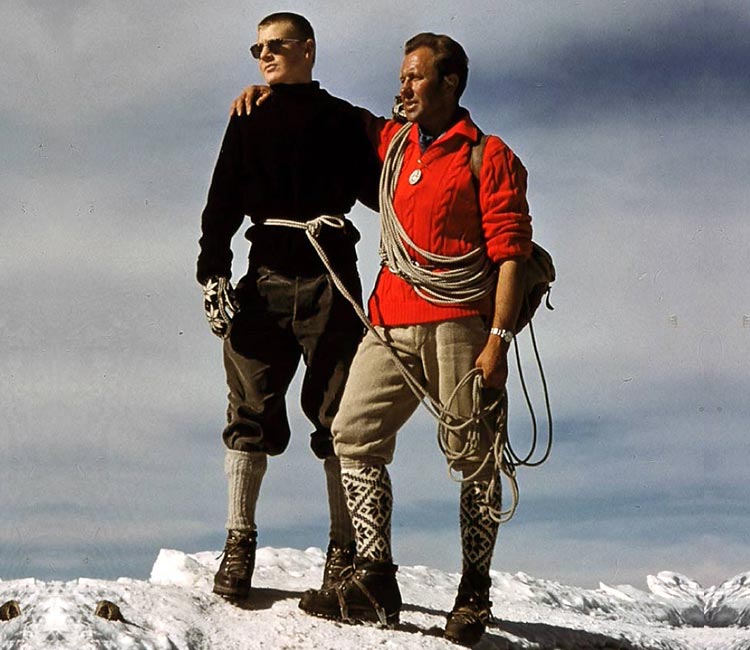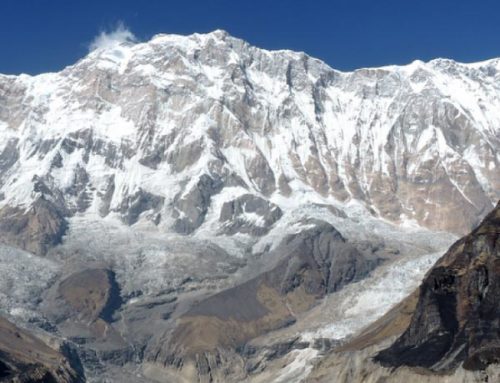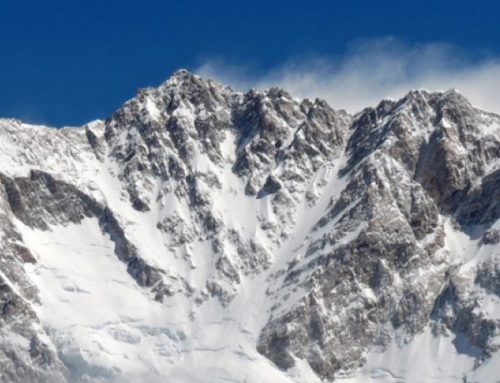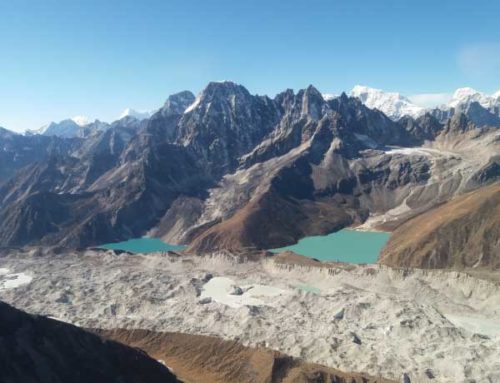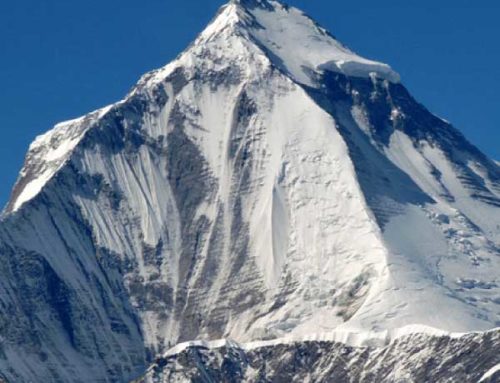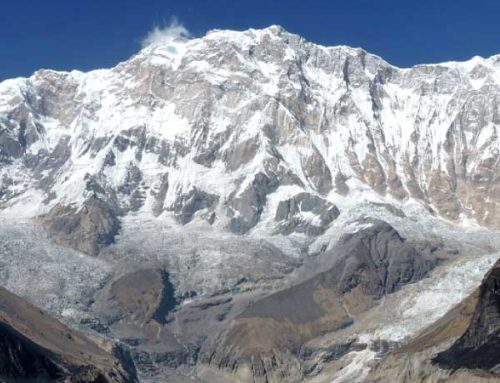Knife Edge in the Sky
It was a rainy Saturday morning in March. I was 14 years old and bored out of my mind with nothing to do. Stuck indoors, I stared through the rain-splattered window of my room and sighed. My eyes wandered to the bookshelf nearby, and fell on a book that a friend of my father’s had given me some time ago as a present.
It had remained ignored and unopened, attracting dust rather than my attention, until now. The spine of the glossy book jacket proclaimed its title – The Complete Book of Marvels. What was that about? The author was Richard Halliburton. Who was he?
I reached for the book, and my life was changed forever.
An Idea is Born

The author’s inspiration: Haliburton’s The Complete Book of Marvels
Our home was in a prosaic suburb of Los Angeles – Glendale, California. Like most other kids, I knew very little about the world. America was an enormous island, with the rest of the world on the other side of huge oceans, far away.
The inside of the book jacket told me that Halliburton had been a famous adventurer in the 1920s and ‘30s. The book was 20 years old, and was a compilation of his exploits and experiences. As I paged through the descriptions and black-and-white pictures of dozens of the world’s most extraordinary places, I was transfixed. The world, it dawned on me, was a vast place of endless wonders and adventures.
What mesmerized me in particular was Halliburton’s account of climbing the Matterhorn. I stared at his picture of the Matterhorn, entitled “The Tiger of the Alps,” for the longest time.
“Dad, I want to climb that mountain”
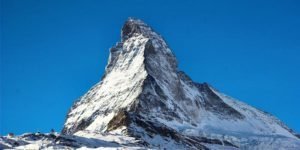
The Iconic Matterhorn
Then, as if I were in a trance, I found myself getting up from the chair in my room and walking down the hall to my parents’ room, where I found my Dad in his easy chair, reading an Erle Stanley Gardner detective novel.
He looked up at me, waiting for me to say something. I laid the Halliburton book over the Gardner book on his lap, open to the double-spread picture of the Matterhorn. He looked down at the picture, then looked back up, still waiting. I didn’t consciously say anything. I pointed at the picture and heard myself say, “Dad, I want to climb that mountain.”
An American Family in Europe
A 14 year-old boy with no mountaineering experience at all beyond Boy Scout hikes in California had suddenly announced straight out of the blue that he wanted to climb the most famous mountain in the world. Most parents would have laughed at the absurdity.
But not my Dad. He looked at me intently, and saw that something had touched me deeply. Instead of laughing, he said, “Let’s talk about it.”
With those words, I was out of my trance. I knew we were going to Europe this coming summer. My father was a local television personality on KTTV, an independent station in Los Angeles, and he had persuaded the station to pay for a show to be filmed by him, An American Family in Europe.
Traveling to Europe was exotic in 1958. What was really exotic was traveling to Russia.
He got the station to cough up the dough for us to see London and Paris and Rome because he included Moscow on the itinerary. Taking an American family with three kids – me, my 11 year-old sister Judy, and my 5 year-old sister Janine – into the scary heart of Soviet Communism was a real audience-grabber.
A Father’s Support
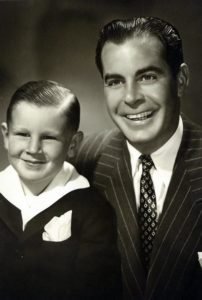
The author as a boy with his father, Jackson Earl Wheeler
So I asked Dad if we couldn’t include Switzerland on the itinerary. I told him that the altitude of 12,000 ft. trekking over Glenn Pass in the High Sierras on my Silver Moccasins Boy Scout hike didn’t bother me and the Matterhorn was “only a few” thousand feet higher (at 14,692 ft.), that steep heights didn’t bother me, that I was in good shape, et cetera, et cetera.
It was a pretty thin argument, but however ridiculous my father thought it might be, he still didn’t laugh. He listened. When I finished, he said, “Our lighting director at KTTV, Hannes Schmidt, happens to be from Switzerland. He’s such a good skier that he competed in the 1948 Winter Olympics in St. Moritz, Switzerland, so I assume he may know something about climbing in the Alps where he grew up. I’ll talk to him and see what he thinks – okay?”
Good News
Early that next week, Dad came home from work to tell me he had talked with Hannes. “I have to tell you it was not the reaction I expected,” he said, and paused for a moment for effect, as my heart didn’t know whether to leap or sink. “He got very excited, telling me that his best friend in Switzerland is a climbing guide for the Matterhorn.”
Dad pulled out his small notepad from his coat. “They call such a mountain climbing guide a bergführer, mountain leader, and no one climbs the Matterhorn without one. His name is Alfons Franzen, and he lives in the Swiss village at the base of the Matterhorn called Zermatt. Hannes spent a lot of time skiing there while practicing for the Olympics, and he and Alfons became close friends. He’s going to write to Alfons about you, and ask if he’ll agree to guide you.”
My father looked at me closely to see the impact of these words. I was too awestruck to say anything, until I finally stammered, “How could there be such a coincidence?” Dad smiled, and admitted, “I don’t have an answer for that!”
A Unique Request
But in a couple of weeks, we did get Alfons’ answer. Hannes brought it to our home to translate, as it was in German, although Hannes assured me Alfons spoke several languages including English.
“No one has climbed the Matterhorn at such a young age,” Alfons said, so to get a request from such a young person with no climbing experience was, as he put it very politely, “unique.” The best he could do was to offer to guide me up the mountain as far as he thought it safe, then we must turn back. “The chances of the boy’s reaching the summit is small, so he must agree to my decision to turn back whenever I decide. If he agrees, then on that basis I will be his bergführer.”
“Of course I agree!” I yelled with a teenager’s enthusiasm. My Dad looked at Hannes, and nodded. I was going to get a chance at turning a ridiculous dream into reality.
A Shock from the Bergführer
The air in Zermatt was fresh and free. Nonetheless, the first sight of the Matterhorn took my breath away. Pictures don’t prepare you for its monumental size, a gigantic tower of rock jutting alone, with no other mountains nearby, thousands of feet into the sky.
Staring upward at it, I wondered, what in the world am I doing here, what chance have I got – at 14, with no climbing experience at all – to get to the top of that?
Yet I was given no time for doubts, for no sooner had I met Alfons Franzen than he announced we must begin our climb within hours. I thought I would have a week of practice climbs and learn some basic skills, but no.
“The weather,” Alfons explained. “There will be a storm in three days, covering the mountain in snow and ice. Then it will be impossible to climb for who knows how long. We must go now.”
To Hörnli Hut
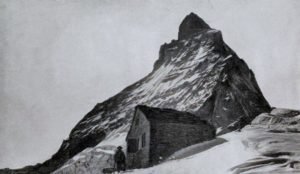
Hornli Hut
My father, looking concerned, took Alfons aside for a private conversation. I was impressed with Alfons. He was 34 and had guided climbers to the top of the Matterhorn over 100 times. He was serious yet friendly, exuding a calm confidence that told me I could trust him. Evidently my father felt the same way, for after their talk, he looked at me with a nod. The climb was on.
I was quickly outfitted with rented boots and climbing clothes, given a quick lunch, so that within hours of my arrival in Zermatt, I was on the tram from the village to the mountain’s lower slopes. From there we would hike up a steep trail to a small mountaineering lodge called the Hörnli Hut to spend the night.
As we hiked along, I asked Alfons what he thought my chances were.
“You are a young boy who has never climbed a single mountain,” he replied. “You have no climbing skills. You have just come from sea level and are not acclimatized to the altitude. Many, many people without these disadvantages have failed to reach the summit, for climbing the Matterhorn is an ultimate test of mountaineering.
“You have to climb four thousand feet of rock straight up and straight back down within a few hours, because you don’t want to come down in bad weather that can arise so quickly, and certainly not in the dark. So if you ask me if I believe you can do this, I can only say we will see. My job is to give you the best chance I can and bring you back down safe.”
Then he looked at me, right in the eye to say, “I can tell you that your father believes you can make it.”
With that, he accelerated our pace up the trail winding through one switch-back after another to the Hörnli Hut. We would spend the night here at 10,700 feet, 4,000 feet below the summit – or at least part of the night, as Alfons woke me up at 3:30am.
The Ascent Begins…

After a fast breakfast and roping me up, we were off by 4. In the dark, the night still and windless, the sky cloudless and moonless, there was enough starlight from the countless stars to dimly silhouette the giant pinnacle of rock towering straight above.
But I couldn’t think about the mountain. All I could think about was Alfons’ booted feet. He would find the route above with his flashlight, then shine it down for me to see where he placed his feet. My universe, my purpose in life, was nothing more than to watch his feet, keep them close above me, follow exactly where they went.
It got lighter, we no longer needed the flashlight, we never stopped, and I noticed something strange. We were going almost straight up, yet it began to seem that I wasn’t climbing vertically but crawling horizontally. If we fell, we would fall thousands of feet – but falling seemed absurd when you thought you were crawling on all fours on flat ground. It was a weird illusion. Maybe it was the sense of safety provided by Alfons’ rope around my waist.
Curtain of Gold
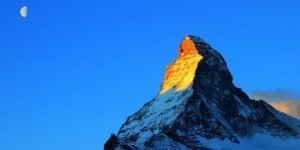
The sun striking the Matterhorn…
We took a break and Alfons told me to look up. The rising sun had hit the summit of the Matterhorn far above us, and a curtain of gold began slowly dropping down its vertical east face, unveiling the mountain against a cobalt sky. We looked in the distance behind us to see the newborn sun turning the glaciers and ice-capped peaks of Monte Rosa, Castor and Pollux, and the Breithorn a glowing pink.
I told Alfons about my weird illusion. He gave me a look of curious assessment, then with the slightest smile said, “You climb well.” Then it was back to the universe of following his feet.
Finally we reached a tiny wooden emergency shelter called Solvay. We stopped and Alfons took off his rucksack to bring out two metal contraptions with sharp spikes. “Now we see how you do with crampons,” he quietly announced. “You have never used them, yes?” I shook my head.
As he strapped them on my boots, he informed me, “It is much harder from now on, more vertical over snow and ice. You must pull yourself up for several sections with fixed ropes. Crampons slip easily on rock, so you must be very careful. It is almost 9 o’clock. We must reach the top by 11 to give us time to get back down.”
Over the Shoulder
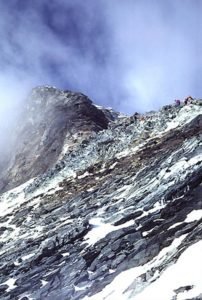
The Matterhorn’s Shoulder
He said this so flatly that I couldn’t tell if he was saying I did have a chance or no chance at all to reach the summit. One good sign was that not once had he given me a disparaging look or reminded me of our agreement for me to turn back whenever he decided. So I decided to be encouraged.
Following Alfons’ feet was indeed much harder with these slippery crampons. We reached huge bulges of rock called The Shoulder which jutted out into empty space. I was very grateful for a series of fixed ropes so I could pull myself over them. Then came this steep ice field, and I was very grateful for the crampons.
Above the ice field I had to creep along a ridge between the North and East faces that dropped thousands of feet straight down on either side and was filled with snow and ice between the rock crevices. I became even more grateful for the crampons. Now came a giant section that pitched outward, hanging in the air. More fixed ropes to the rescue. Each one seemed a little harder, as my legs were quivering badly. I felt a stab of fear that I was running out of gas.
The Hang-Over
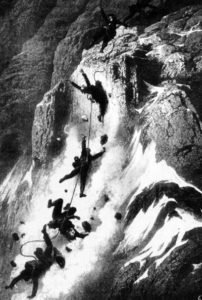
The Tragedy of the Hang Over, 1865
Alfons had me sit down when we reached the top of the ropes. “This is the Dachel, the Roof, or what some call the Hang-Over,” he said as we had a drink of water. “It is the most notorious place on the mountain. It is here Whymper had his accident.”
I peered over the ledge. So this is where the most famous accident in mountaineering history happened. Every climber knew the tale. The mountain was thought unclimbable until an Englishman, Edward Whymper, led a party of seven to the summit on July 14, 1865.
Then on the way down from their triumph, the most inexperienced among them, Douglas Hadow, slipped and fell, dragging three others – Michael Croz, Charles Hudson, and Lord Francis Douglas – over this very spot, the Hang-Over. All seven were roped together, and when Whymper and the two others, Peter Taugwalder and his son Peter Jr., braced to stop the fall, the rope broke and the four plummeted into the abyss.
“You know, Jack, hundreds of people have died climbing the Matterhorn, more than any other mountain in the world,” Alfons said chillingly. And then he smiled. “But you are not going to be one of them.”
His eyes had a twinkle. “You remember our agreement, I am sure. That we would turn back whenever I decided. I have not only been watching you, I have been listening. Not once have you asked, ‘How far is the top?’ or ‘Can we stop now?’ All you have thought about is the next few feet in front of you. You have not complained once, although I know you are tired and your legs are shaking. I must tell you that I am very surprised you have made it this far. So perhaps we could go a little farther, say a hundred more yards. What do you think? For the summit is only that far away.”
A New Life Begins
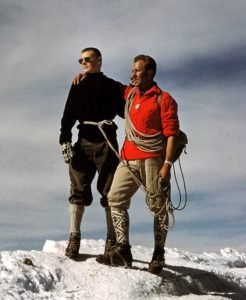
A triumphant author, the youngest person to ascend the Matterhorn, and his guide Alfons Franzen
Alfons’ smile broadened into a big grin and I felt of bolt of energy surge through me. I floated up those few hundred feet in what seemed just a moment. Yet when I reached the summit I felt both joy and confusion – for there was no peak. The top of the Matterhorn, I discovered, was like a football field two feet wide. There were sheer drop-offs straight down for thousands of feet on either side. The top of the Matterhorn is a knife edge in the sky.
It was the moment of supreme exultation that I imagined it would be. The view was extraordinary – countless peaks, rock pinnacles, snow fields, and glaciers of the Alps stretching in every direction, with the snowy dome of Mont Blanc among them in the distance. But what was far more extraordinary was the exhilaration inside me. That’s what I wanted to live for.
Alfons shook my hand in congratulations. Then I heard a noise. It was faint but the sound was clear. It was the engine of a small plane. I looked down. A thousand feet below, a little single engine airplane was flying alongside the mountain. I looked at Alfons. “Is it…?” I asked. He nodded. “Yes, it is your father. I told you he thought you would make it.”
“He’s with Hans Geiger, isn’t he?” I asked. We had met Alfons’ friend, a well-known pilot, in Zermatt, and I noticed my father talking earnestly with him. Dad had persuaded Mr. Geiger to fly him in that tiny plane around the summit in the late morning on the chance that I might be there.
I was.
It was just past 11 in the morning, September 15, 1958. The plane slowly gained enough altitude to make a pass by the summit. The door had been taken off so Dad and I could see each other clearly. He was waving. Standing on the thin 14,692 ft. summit of the Matterhorn tightly roped to Alfons, tears streaming down my face, I waved back to my father in the little plane circling around us.
It was a moment that set me upon my life’s direction. People collect things. They collect stamps, or coins, or porcelain. In that moment on the summit of the most famous mountain on earth at age 14, I decided what I wanted was to collect extraordinary experiences. You could lose your stamps or coins, but you can never lose what you have done with your life. A collection of unbelievably memorable adventures can never be taken away.

